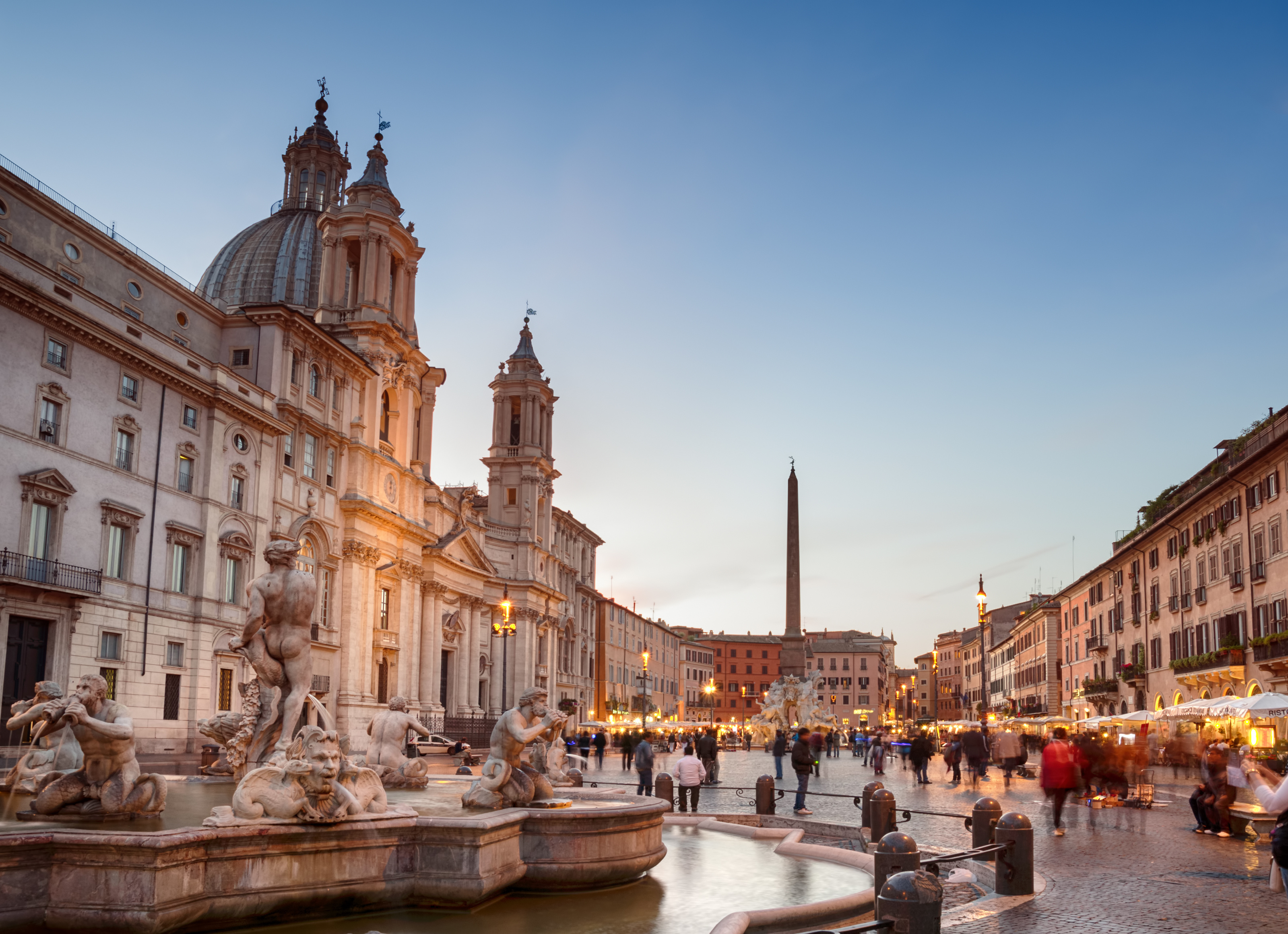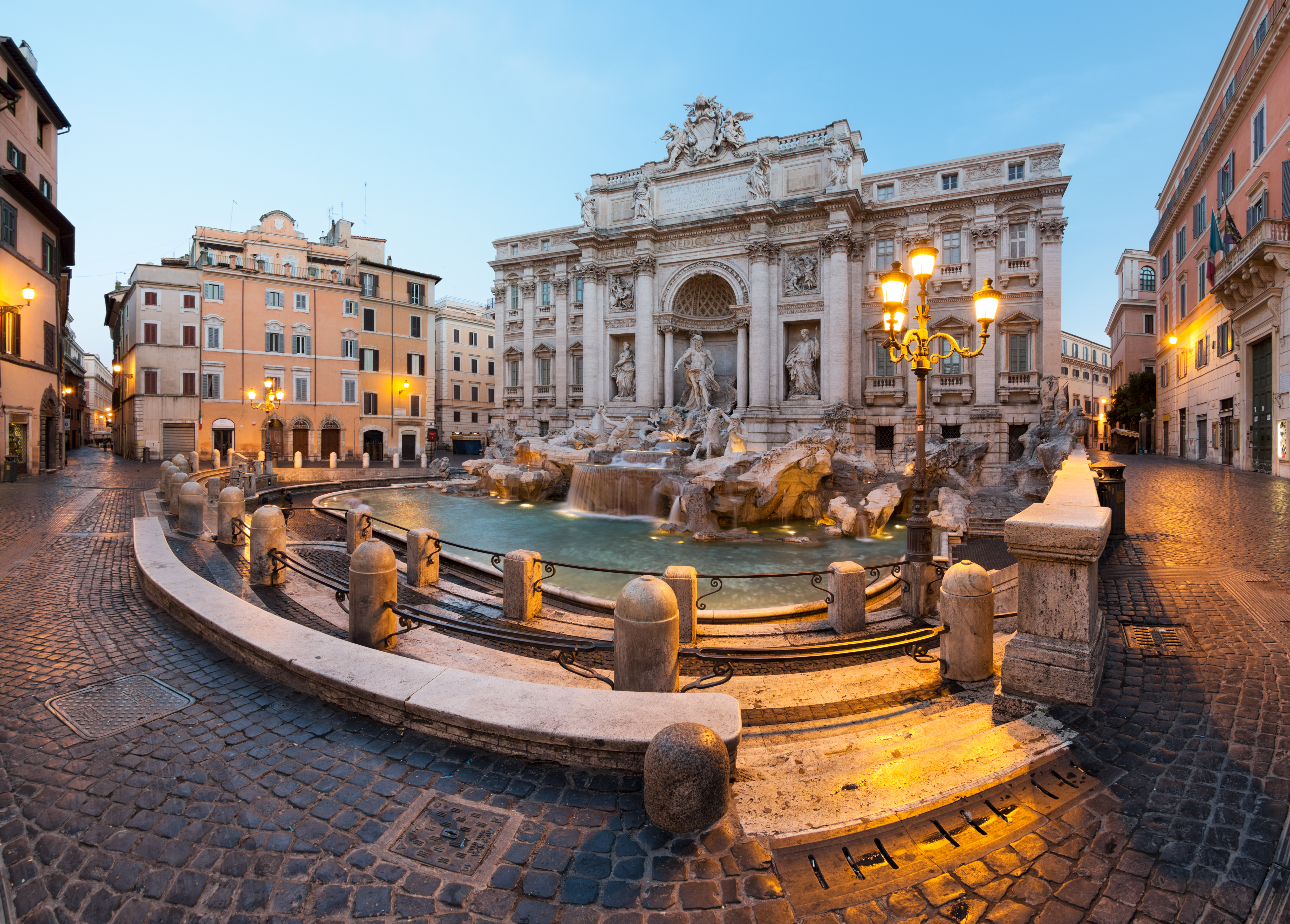A sacred and profane city, joyful and profound, noble and popular, where ancient and modern have become one.
A tour that will lead you to discover the most famous squares and fountains in Rome such as Pantheon, Trevi Fountain and Navona Square.
Let your guide reveal the hidden beauties of some of the most evocative churches of the eternal city such as Sant' Ignazio, San Marcello al Corso and the amazing undergrounds of the Basilica Santa Maria in via Lata.
End the day with an Happy Hour in a characteristic restaurant in Rome.

Rome develops on the Seven Hills and progressively extends into what was called the area of the Campo Marzio, right from Mars, the God of war.
Due to its position, the Campo Marzio acquires ever more new relevance, with the first places of worship, theaters, thermal baths, gardens and stadiums. With the construction of the Pantheon, the Romans reach the highest levels of construction techniques. Great artists have contributed to the realization of the magnificence of these places, such as Bernini, Borromini, Caravaggio and Pietro da Cortona: Baroque Rome is born.
The heart of Rome has always been a place of entertainment, where there is a good place to have dinner and to be with friends, or just to take a walk through the characteristic streets of the city center among fountains and places of suggestive beauty.
hideIt has always been an important center of attraction for Romans of all ages. Under the square and inside its palaces, the building that gave shape to this square is hidden, the stadium wanted by the emperor Domitian, for the holding of the Capitoline Games. will lead to the current name: Navona.
Over the centuries, houses, palaces were built, new roads were built and became a meeting point for scholars and students. It takes on an international character.
Between 1500 and 1600 the popes and their families donated the three wonderful fountains to this square: the Fountain of the Rivers, the Fontana del Moro and the Fountain of Neptune. All around are magnificent palaces and churches, including the one dedicated to Sant'Agnese.
hide
The Basilica of Santa Maria in via Lata has ancient origins. Around the year 1000 there was a medieval church which was built on a primitive church of the VII-VIII century. Over the centuries it took on what today is its baroque appearance.
Today this place preserves the memory of Saint Paul and in the left aisle you can admire a painting that shows a rare story of the life of the Saint together with people he baptized here.
Pietro da Cortona is one of the leading artists of this church as he excavated the foundations of the facade and discovered ancient undergrounds of inestimable value. The remains found date back to the 1st century AD. and were part of some remaining buildings, attributable to an ancient building.
According to the tradition, in one of these buildings Saint Peter was hosted first and then Saint Paul was welcomed during two years of imprisonment in Rome.
hide
The french writer Stendhal, who was in Rome at the beginning of the 19th century, in his book Passeggiate Romane wrote: "the most beautiful remains of Roman antiquity is undoubtedly the Pantheon".
This temple has suffered so little that it appears to us as the Romans must have seen in their time. In fact we can admire one of the most magnificent buildings of Ancient Rome, which has come down to us perfectly preserved.
Now a Christian church, is an unsurpassed achievement and testimony of the incredible constructive and organizational skills of the Roman people.
The renewed study of Roman architecture during the Renaissance meant that great artists, for the admiration they had for this monument, wanted to be buried here. Raffaello Sanzio is the best known, followed by Annibale Carracci and Baldasarre Peruzzi.
hide
One of the wonders of Baroque art in Rome and considered one of the most famous fountains in the world. The Trevi Fountain is a magical creation, which admirably blends water, architecture and sculpture. The theme of the fountain is the sea, in the center the God Ocean on a shell chariot pulled by two sea horses preceded by two tritons; a large cliff supports the colossal statues.
Next to Oceano, the statues of Abundance and Health. the water gushes out from numerous jets and flows from tub to tub.
Around the pool a few steps allow visitors to enjoy the beauty of this unique fountain. Today a famous tradition has it that turning your back to the fountain and throwing a coin into the basin you can return to Rome. The coins collected by the Municipality of Rome are destined for charitable works.
hide